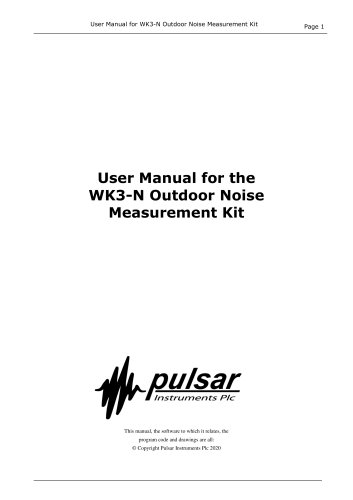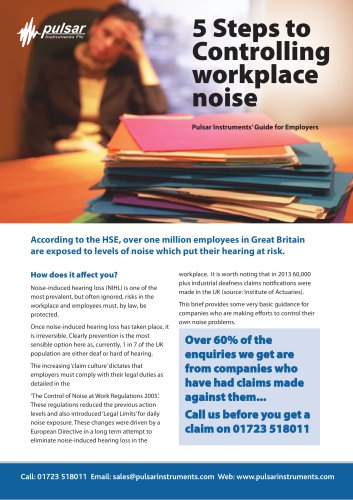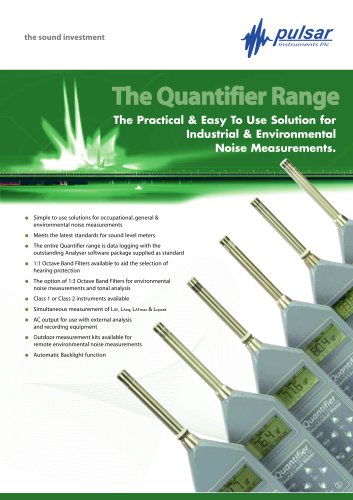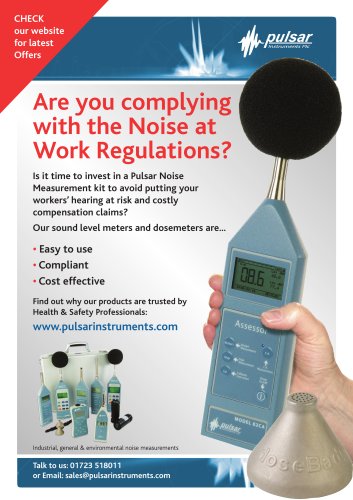
Catalog excerpts

Employer's Guide: 5 Steps to Controlling Hand Arm Vibration According to the HSE, over 2 million workers in the UK are exposed to levels of handarm vibration which put them at clear risk of developing one or more of the problems associated with Hand Arm Vibration Syndrome. Whilst new claims have generally been declining – due to greater awareness of the issues and new ways of doing things – there are still around 1000 reported cases every year with associated costly fines. noitarbiv fo stceffa eht era tahW Hand Arm Vibration Syndrome (HAVS) refers to a condition typically brought on in the workplace from other powerful vibrating machinery. It is a permanent painful condition affecting blood vessels, nerves and joints which over time can stop people from carrying out normal everyday tasks and cause disability or, in extreme cases, the need for amputation. The condition can affect the body parts that make up your hand, wrist and arm and may develop slowly over time, becoming more severe the longer exposure occurs. Other related conditions caused by vibration, and often covered generically under the HAVS term, include Carpal Tunnel Syndrome (CTS) and Vibration White Finger (VWF); claims for these make up the second largest industrial injuries disablement benefit after lung-related diseases. ediuG siht tuobA vibration from the use of hand-held power tools and Unless vibration is identified and properly assessed, employers can’t know the level of vibration risk and whether action is needed to protect workers. It is very important that people exposed to hand-arm vibration are informed of the early symptoms such as tingling, numbness and whitening of fingers so that they are given opportunities to be protected from further permanent damage. This Guide provides some basic guidance for companies who are making efforts to control the risks of hand-arm vibration affecting their employees and comply with The Control of Vibration at Work Regulations (2005
Open the catalog to page 1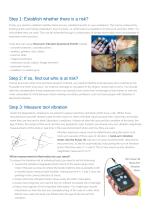
?reyolpme na sa seitud ruoy era tahW Step 1: Establish whether there is a risk? Firstly, you need to establish whether there are any vibration hazards in your workplace. This can be achieved by looking at the work being undertaken, how it is done, i.e. what tools are needed to do the work, and how often / to what extent they are used. This can be achieved through a combination of simple observation and a knowledge of employee work practices. Tools that can cause Hand Arm Vibration Syndrome (HAVS) include: - concrete breakers, concrete pokers - sanders, grinders, disc cutters - hammer drills...
Open the catalog to page 2
Step 4: Assess employee vibration exposure As a responsible employer, not only is it vital to know the vibration risk of the power tools your employees use, it's also important to identify their individual exposure risk (or dose) during a typical shift. The overall vibration exposure of individual employees is measured over a reference period of 8 hours and is known as the A(8). To assess the vibration risk to individuals (daily exposure) you need to carry out Step 3 of this Guide and: 1. Talk with employees and find out what their typical work routine consists of, identify what power tools...
Open the catalog to page 3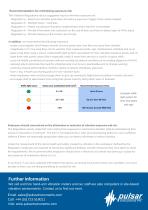
Recommendations for minimising exposure risk The Vibration Regulations set out suggested ways to minimise exposure risk: Regulation 5 - Select low vibration level tools and reduce exposure 'trigger' times where needed. Regulation 6 - Maintain tools / machines Regulation 7 - Health surveillance should be implemented where the EAV is exceeded Regulation 8 - Provide information and instruction on the use of tools and how to detect signs of HAVs injury Regulation 9 - Provide training on the correct use of tools. In addition, we recommend the following measures: - create a tool register which...
Open the catalog to page 4All Pulsar Instruments catalogs and technical brochures
-
Hand-Arm Vibration Meter
4 Pages
Archived catalogs
-
Model 33
4 Pages
-
The Assessor Range
6 Pages
-
Entertainment Noise
11 Pages




